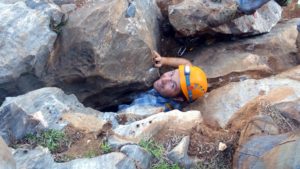Where Are They Now? An Interview with SLS Alum, Craig Segall (JD ’07)
Welcome to the first installment of our new “Where Are They Now?” alumni series! These articles follow a Q&A interview format with SLS/MLC alums and I hope you find it interesting to read about their careers since graduation–and to hear how their clinic experience may have played a role.
For this installment, we had the pleasure of catching up with SLS and Environmental Law Clinic alum Craig Segall (JD ’07), who shares thoughts on his career path and some of his more salient experiences in the clinical program.

Q: Where has your career path taken you since graduation?
A: After law school, I clerked for Judge Marsha Berzon, and then worked for five years at the Sierra Club, largely on climate, energy, and clean water issues. Since 2013, I have been a senior staff attorney with the California Air Resources Board. My portfolio at ARB focuses on climate change; among other things, I am the staff lead for ARB’s efforts around the federal Clean Power Plan. I also do quite a bit of work on short-lived climate pollutant issues, including around methane from oil and gas operations.
Q: Do you plan to maintain a career in public interest law?
A. Yes. Though, like any office worker, I sometimes think about trading in for a long stint on a trail crew. But, really, I can’t think of a better desk job. This work is relevant and important, and it feels good to work hard on issues that matter so much to so many people.
Q: So, you were interested in environmental law practice prior to law school?
A: Very much so. In my undergraduate science days, I became increasingly concerned about climate change and environmental degradation generally. I was particularly interested in the ways in which environmental legal practice bridges technical and scientific issues with larger questions of justice that ought to motivate legal and policy decisions.
Q: It seems natural, then, that you took the Environmental Law Clinic while at SLS. Did your experiences in the clinic influence or help prepare you for the career you have now?
A: I don’t think I’d be where I am today without the clinic. That experience shaped my approach to lawyering, and showed me that it could be fun. Practically speaking, friends from the clinic and Professor Sivas are a big part of my professional life. It’s good to keep working together. The clinic confirmed my preconceptions that I wanted to be an environmental lawyer. It showed me the grinding challenge of the work, but also how great it was to work as a team with good-hearted people to help protect the world.
Q: What would you say was your proudest moment in the clinical program?
A: Do I have to pick just one? First, I’d say I’m thrilled to have helped set up a major lawsuit over illegal development of vernal pool wetlands in the central valley. I faltered on the temporary restraining order, but ultimately helped to win a preliminary injunction that stopped development long enough for a good settlement to be reached.
Another time, I was part of the team that brought a lawsuit on behalf of then Senator John Kerry and then Representative Jay Inslee intending to force the George W. Bush administration to release a national climate science assessment. I was able to develop a detailed whistle-blower declaration that helped expose how the administration had been suppressing climate science. The lawsuit helped get the national climate program back on track.
One last thing I’ll mention is that as part of a Hurricane Katrina emergency legal response team, I got to spend a week dashing around the Mississippi gulf coast helping a historically black community preserve the wetlands that had buffered it from the worst of the storm. It is also the first, and (so far) the last, time I have ever gotten to actually stand in front of construction equipment waving a legal order to stop work. It was an exciting moment.
Q: Did you consider clinical education as a factor before applying to Stanford Law?
I didn’t know much about clinical education, but I really appreciated Stanford’s insistence that good lawyers be comfortable both with doctrine and with human problem solving, and I think this approach is reflected in the centrality of clinical education to the SLS experience. When I discovered the clinical program, I knew I wanted to be part of the Environmental Law Clinic because of the community that I knew Professor Sivas created. Environmental problems are often pretty intractable and it really helps to engage them with good will and a sense of humor, with friends. That was very much the clinic’s atmosphere, and it’s an approach I’ve tried to since adopt with many of my clinic colleagues, who have wound up as professional colleagues, too.
Q: What advice do you have for law students considering clinical legal education?
A: Go for it! There’s really no better training for a life in law. Now that I am sometimes in a hiring role, it’s worth saying that clinical students, all else being equal, definitely have a leg up.
